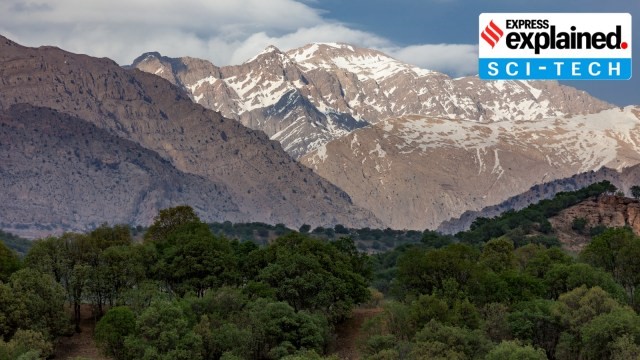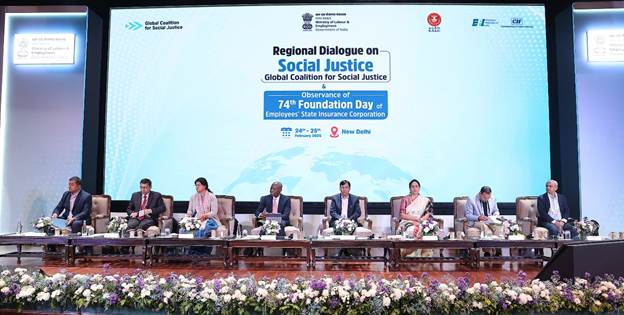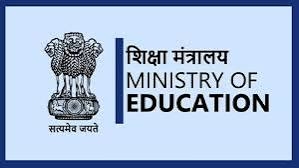Zagros Mountains and Iraq’s Tectonic Subsidence

- 27 Feb 2025
In News:
Recent geological studies have found that the hilly region around the Zagros Mountains in northern Iraq is slowly sinking into the Earth, a process attributed to ancient tectonic dynamics. This discovery has implications for earthquake prediction and geothermal energy potential.
Zagros Mountains
- Location: Stretches ~1,500 km from eastern Turkey and northern Iraq across the Iranian Plateau to the Strait of Hormuz.
- Highest Peak: Mount Dena (4,409 m / 14,465 ft).
- Geological Composition: Primarily limestone and shale from the Mesozoic Era and Paleogene Period.
- Climate: Semi-arid temperate – cold winters and dry, arid summers.
- Vegetation: Dominated by oak and pistachio trees with steppe vegetation.
Geological Process Behind Iraq’s Sinking
- The Zagros region is influenced by the tectonic collision between the Arabian and Eurasian Plates.
- A sinking oceanic slab, part of the ancient Neotethys Ocean floor (over 66 million years old), is pulling the region down.
- This slab is subducting beneath the Eurasian Plate, a process occurring over tens of millions of years, making it imperceptible in human timescales.
Research Insights
- The studyused rock records, sediment analysis, and deep-earth imaging to understand the tectonic architecture of the region.
- The findings explain why the depressions around the Zagros Mountains are deeper than the current topography would suggest.
Significance of the Study
- Helps develop precise geological models critical for:
- Earthquake prediction – by understanding fault depths and configurations.
- Geothermal energy exploration – estimating areas with high geothermal gradients.
- Especially relevant in a region prone to seismic activity (e.g., 2023 Turkey-Syria earthquakes).
First Regional Dialogue and ESIC Foundation Day

- 27 Feb 2025
In News:
- India hosted the first-ever Regional Dialogue on Social Justice under the Global Coalition for Social Justice in New Delhi (Feb 2025).
- Event coincided with the 74th Foundation Day of Employees’ State Insurance Corporation (ESIC), established in 1952.
Global Coalition for Social Justice (GCSJ)
- Launched by ILO in 2023, GCSJ aims to address social justice deficits globally, aligned with SDGs.
- Membership: Open to governments, businesses, academia; India is a key member.
- Promotes inclusive, sustainable development, responsible business conduct, and labor rights.
- India leads the Asia-Pacific Coordinating Group and spearheads responsible business initiatives.
India’s Achievements in Social Protection
- As per ILO’s World Social Protection Report 2024-26:
- India’s social protection coverage (excluding health) has doubled from 24.4% (2021) to 48.8% (2024).
- India contributed 5% of the global increase in social protection coverage.
- Employability of Indian graduates rose from 33.95% (2013) to 54.81% (2024).
Key Government Initiatives
- e-Shram Mobile App launched to improve access to welfare schemes, curated job listings, and multilingual support.
- Focus on extending coverage to:
- Informal sector (unorganized, gig, platform, construction, agricultural workers).
- Women and youth, with targets like 70% female workforce participation by 2047.
- Emphasis on AI and the Future of Work, living wages, and Global Value Chains through the Decent Work Country Programme.
Constitutional Provisions Supporting Social Justice
Provision
Focus
Preamble
Social, economic, and political justice
Art. 23 & 24
Prohibit trafficking, forced and child labour
Art. 38
Reduce social and economic inequalities
Art. 39 & 39A
Fair wages, legal aid, livelihood opportunities
Art. 46
Promote education and welfare of weaker sections
About Employees’ State Insurance Corporation (ESIC)
- Statutory body under the ESI Act, 1948, Ministry of Labour& Employment.
- Eligibility: Employees earning ≤ ?21,000/month.
- Coverage: Establishments with ≥10 employees (or <10 in hazardous sectors).
- Benefits: Medical care, maternity, sickness, disability, dependent benefits, and unemployment allowance.
Significance of the Dialogue
- Platform for global best practices exchange from countries like Germany, Brazil, Australia, Philippines, and Namibia.
- Showcased India’s leadership in technology-driven social security, gender-responsive policies, and youth skilling.
- Bharatiya Mazdoor Sangh (BMS) and CII-EFI signed a Joint Statement on Responsible Business Conduct.
- Publications released include:
- Best Practices on Responsible Business Conduct
- Compendium on Social Protection in India
- Social Security for Informal Workers
Three-Language Formula and NEP 2020

- 27 Feb 2025
In News:
The Three-Language Formula (TLF) under the National Education Policy (NEP) 2020 has sparked controversy, particularly with Tamil Nadu opposing its implementation. The Union government’s withholding of ?573 crore under the Samagra Shiksha Abhiyan (SSA) for non-compliance has intensified the Centre-State standoff.
What is the Three-Language Formula?
- NEP 2020 mandates students learn three languages, of which at least two must be Indian languages.
- States, schools, and students have flexibility to choose the languages, with no imposition from the Centre.
- The medium of instruction should be the home language, mother tongue, or regional language at least until Grade 5, preferably till Grade 8 and beyond.
- Foreign languages like French, German, and Japanese can be offered at the secondary level.
Historical Background:
- Kothari Commission (1964–66) proposed the Three-Language Formula to promote national unity and linguistic diversity.
- Formally adopted in the NPE 1968 under PM Indira Gandhi, reaffirmed in 1986 (Rajiv Gandhi), and revised in 1992 (Narasimha Rao).
- Article 351 of the Constitution mandates the Union to promote the spread of Hindi.
- Tamil Nadu has historically rejected Hindi imposition, favoring a two-language policy (Tamil and English) since CM C.N. Annadurai’s tenure.
Benefits of the Three-Language Formula (UNESCO-backed):
- Improved Learning:
- Multilingual students show better cognitive development and academic performance.
- Education in the mother tongue improves comprehension and parental engagement.
- Social Inclusion:
- Helps include marginalized communities and preserve indigenous languages.
- Promotes unity in diversity and national integration.
- Economic & Environmental Gains:
- Preserves traditional ecological knowledge.
- Example: Switzerland attributes 10% of its GDP to its multilingual heritage.
Challenges and Criticisms:
- Politicization: Language policies can fuel regionalism and identity politics.
- Educational Burden: Students, especially from monolingual or low-literacy households, may struggle with an extra language.
- Infrastructure Gaps: There’s a shortage of trained language teachers.
- Diverse States: Linguistically complex states like Nagaland may face logistical issues.
- Technological Alternatives: Tools like AI translators reduce the need for multilingual proficiency.
Way Forward:
- Focus on quality of education before adding languages.
- Promote cooperative federalism—respecting state autonomy while aligning with NEP goals.
- UNESCO-aligned implementation:
- Use sociolinguistic data for planning.
- Develop learning materials in regional languages.
- Train bilingual teachers.
- Encourage community participation in language education.
Ancient Tea Horse Road
- 27 Feb 2025
In News:
The Tea Horse Road, also known as the Southern Silk Road, was an ancient trade network connecting China, Tibet, and India. It played a pivotal role in economic, cultural, and strategic exchanges between these regions for over a millennium. Though less popular than the Silk Road, it was vital for the tea-horse trade and strategic logistics.
Geography and Route
- Length: Over 2,000 km
- Route Type: Not a single path, but a network of caravan routes
- Regions Covered:
- Originated in Southwest China (Yunnan & Sichuan)
- Passed through Tibet, Nepal, Bhutan
- Extended into India via Himalayan passes, reaching Kalimpong and Kolkata
- Key Nodes:
- Dali & Lijiang (Yunnan): Tea production centers
- Lhasa (Tibet): Central convergence point for trade
- Kalimpong& Kolkata (India): Export destinations to Europe and Asia
- Elevation: Reached up to 10,000 feet in the Himalayas
- Terrain: Extremely challenging — cold, steep, and remote
Historical Evolution
- Tang Dynasty (618–907 CE): Early mentions by Buddhist monk Yijing; trade included sugar, textiles, rice noodles, gold, saffron, and medicinal herbs
- Song Dynasty (960–1279 CE): Institutionalized the tea-for-horse exchange; established official markets for regulated trade
- Mongol Period (13th century): Heightened need for horses for military use against nomadic tribes
- Qing Dynasty's Fall (1912): Political instability weakened trade, but the road was used for global tea exports
- World War II: Gained renewed importance as a logistical route after Japanese blockade of China’s coastline
Tea and Horses – The Core Trade
- Tea: Essential in Tibetan climate; popularized due to practicality and possibly a royal dowry tradition
- Tibetan staple: Yak butter tea
- Pressed tea bricks used as currency in medieval Tibet
- Horses: Sourced from Tibet and Yunnan, vital for China’s cavalry
- Tibetan horses were prized for battles against Mongolian tribes
Decline and Modern Legacy
- Post-1949 (PRC Formation):
- Land reforms and modern infrastructure reduced reliance on traditional portering
- Mechanized transport replaced mule and porter-based systems
- Modern Times:
- Revival through tourism and heritage promotion
- Lijiang declared UNESCO World Heritage Site (1997) for its trade history and cultural legacy
Significance for India-China Relations
- Demonstrates centuries-old economic and cultural exchanges
- Reflects shared heritage through trade, Buddhism, and ethnic interactions
- Ambassador Xu Feihong recently invoked the Tea Horse Road to highlight historical Indo-China links, reinforcing its symbolic role in bilateral diplomacy
HKU5-CoV-2 (Bat Virus)

- 27 Feb 2025
In News:
A newly discovered bat coronavirus named HKU5-CoV-2 has been identified in China by a research team led by Shi Zhengli (Wuhan Institute of Virology), known for her work on bat coronaviruses.
About HKU5-CoV-2
- Type: Bat coronavirus
- Subgenus: Merbecovirus
- This group includes MERS-CoV (Middle East Respiratory Syndrome virus).
- Similarity: Shares traits with SARS-CoV-2 (COVID-19 virus).
- Discovery Location: China
Virological Features
- ACE2 Receptor Binding:
- HKU5-CoV-2 can bind to the human ACE2 receptor, the same one used by SARS-CoV-2 for cell entry.
- Binding Affinity: Lower than SARS-CoV-2, indicating weaker infectivity in current form.
- Intermediate Hosts:Can bind to ACE2 receptors in multiple mammalian species → possible spread through intermediate animals (like SARS-CoV and MERS-CoV).
- Laboratory Studies:The virus could infect lab-grown human lung and gut tissues, suggesting potential zoonotic transmission.
- Pandemic Potential:
- No immediate threat of a pandemic.
- Requires ongoing surveillance for possible mutations enhancing transmission.
Transmission Pathways
- Direct Transmission:From bats to humans through contact with bodily fluids (saliva, urine, feces).
- Zoonotic Transmission via Intermediate Host:Could jump species before infecting humans, similar to MERS and SARS-CoV.
Symptoms (Speculative)
- No confirmed human cases so far.
- Possible respiratory symptoms (based on similarity to MERS and COVID-19):
- Fever
- Cough
- Shortness of breath
- Sore throat
- Fatigue
- Body aches
